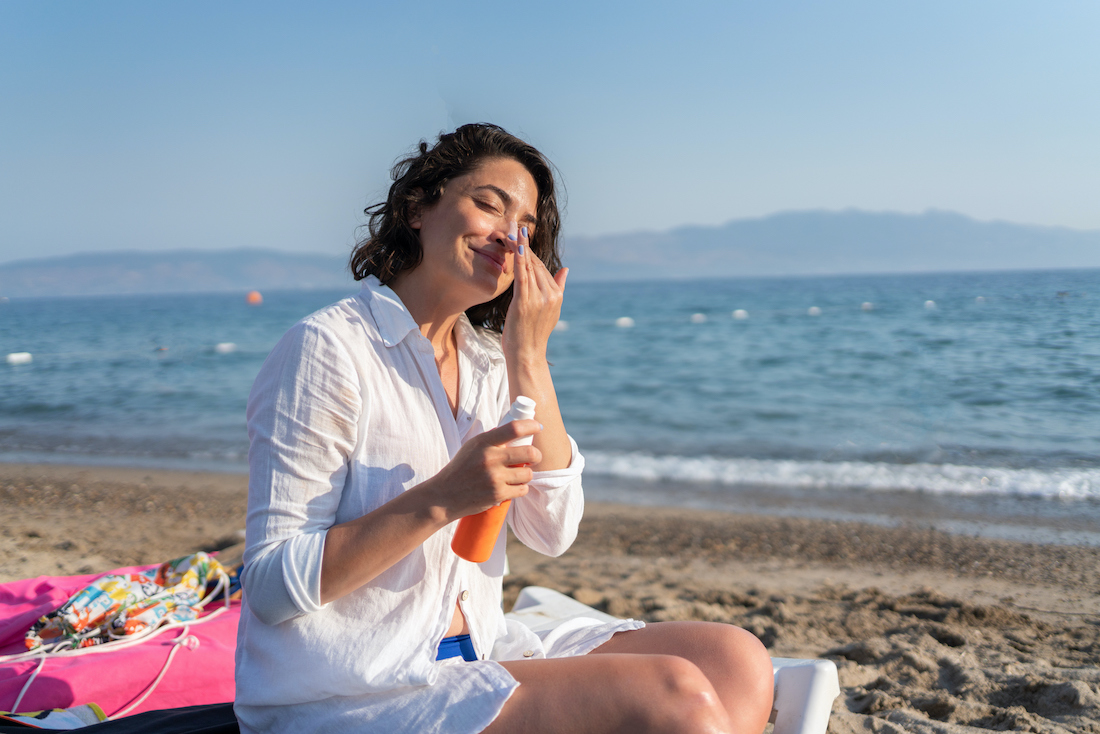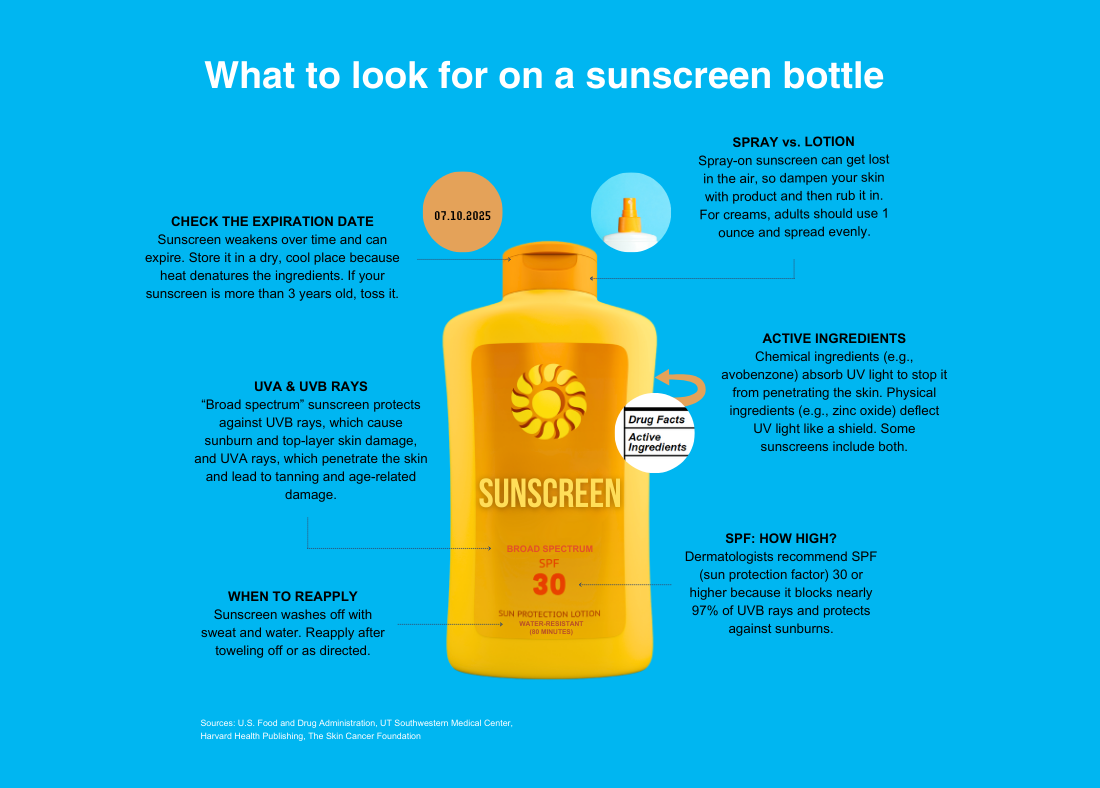Drugs, lotions can magnify sun’s harmful effects, UTSW expert says
Everyday items can trigger body’s reaction to powerful UV rays, causing skin damage such as 'margarita burn' and increasing the risk of cancer

DALLAS – Aug. 02, 2024 – It’s well known that the sun’s ultraviolet (UV) light can wreak havoc on the skin. But most people don’t realize some commonly used products and medications can make us more susceptible to sunburn and other adverse reactions.

“There are multiple reasons we should be mindful of excessive sun exposure aside from skin cancer, although that’s certainly important,” said Kaveh Nezafati, M.D., Assistant Professor of Dermatology at UT Southwestern Medical Center. “There may also be some external factors that can make us more sensitive to sunlight.”
Common signs of photosensitivity include rashes, itchiness, inflammation, or sunburn-like symptoms and skin irritations. Although these symptoms typically resolve on their own, exposure to UV light could heighten the risk of lasting damage or skin cancer.
Dr. Nezafati explained how our everyday habits and environment can make us more vulnerable to the sun’s harmful rays and offered some advice.
Checking label warnings on medications
Certain drugs – whether oral, topical, or injection – contain ingredients that can trigger a physical reaction when the skin is exposed to UV light, according to the U.S. Food & Drug Administration. The severity of the reaction and how quickly it occurs depend on the dosage and the amount of time spent outdoors or in the tanning booth.
Dr. Nezafati cited blood pressure medications such as hydrochlorothiazide as a common example. “Basically, what happens is the ultraviolet radiation reacts with the medicine circulating in the patient’s blood, converting that drug into a chemical byproduct that can directly damage skin cells and cause sunburns,” he said.
Some antibiotics like ciprofloxacin and doxycycline, which treat a wide assortment of infections, work the same way, he said.
“The most important thing is for patients to be aware of the side effects of the medications they are taking and to be vigilant if they need to take extra precautions as a result.”
Being mindful of beauty products
The popularity of skin care routines has skyrocketed thanks to social media, and there’s no shortage of salves, ointments, and lotions. Dr. Nezafati said people may not be aware that cosmetic creams and similar products can increase photosensitivity. He also listed over-the-counter products such as retinol serums and skin exfoliants.
Scan product labels for ingredients such as alpha and beta hydroxy acids, used for their antiaging properties, which may render the skin more tender and oversensitive.
“These exfoliants help remove the top layer of dead skin cells to smooth and brighten the complexion, but that makes it easier for UV radiation to penetrate the skin,” Dr. Nezafati said.
While many brands of makeup now incorporate sunscreen, effective protection often requires a greater amount of product than most people use. Instead, the best option for sun protection is to apply a layer of sunscreen underneath the makeup. Dr. Nezafati recommends choosing one with a sun protection factor (SPF) of at least 30 to get the best coverage.
Avoiding ‘margarita burn’
Another substance capable of triggering a toxic skin reaction can be found in many kitchens and bars: the lime.
“Certain plants contain chemical compounds known as furocoumarins,” Dr. Nezafati explained. “When it gets on our skin and is exposed to sunlight, UV rays activate this chemical, which then destroys cells. In Texas, considering our diet and native wildlife, the most common culprit of this is the juice from limes.”
Colloquially dubbed the “margarita burn” because the popular cocktail often comes with a lime wedge, this phototoxic reaction known as phytophotodermatitis can cause itchy rashes, swelling, and fluid-filled blisters, which typically emerge one to two days after exposure and last for days. These skin lesions can be irritating and painful, often leaving dark streaks of discoloration where lime juice contacted the skin and was exposed to the sun.
In addition to limes, other citrus fruits such as lemons and grapefruit can induce phytophotodermatitis. Furocoumarins can also be found in carrots, parsley, celery, parsnips, and cilantro, according to one study. The best preventive measure is to wash your hands after handling these ingredients and keep the skin covered.
“After it breaks out, there’s little to do but let it run its course,” said Dr. Nezafati, who advises people to avoid popping blisters and recommends an over-the-counter cortisone cream to help with itchiness and irritation. “Most cases are mild and only require gentle wound care. You just have to wait for the skin to exfoliate and heal on its own.”
4 tips to enjoy the outdoors, without the burn
- Apply sunscreen liberally: A general rule of thumb is 2 tablespoons or 1 ounce for an adult’s body. Reapply every time you get out of the water or towel off.
- Choose broad-spectrum SPF 30: It provides protection from UVA and UVB light, both of which can lead to skin cancer.
- Wear long-sleeve clothing: Sun shirts with ultraviolet protection factor (UPF) can help block UV rays.
- Seek shade and avoid tanning beds: Limit exposure to natural and artificial sources of UV light.
6 things to look for on a sunscreen bottle

About UT Southwestern Medical Center
UT Southwestern, one of the nation’s premier academic medical centers, integrates pioneering biomedical research with exceptional clinical care and education. The institution’s faculty members have received six Nobel Prizes and include 25 members of the National Academy of Sciences, 21 members of the National Academy of Medicine, and 14 Howard Hughes Medical Institute Investigators. The full-time faculty of more than 3,200 is responsible for groundbreaking medical advances and is committed to translating science-driven research quickly to new clinical treatments. UT Southwestern physicians provide care in more than 80 specialties to more than 120,000 hospitalized patients, more than 360,000 emergency room cases, and oversee nearly 5 million outpatient visits a year.

